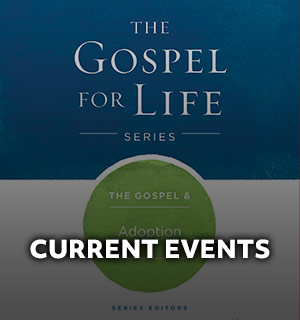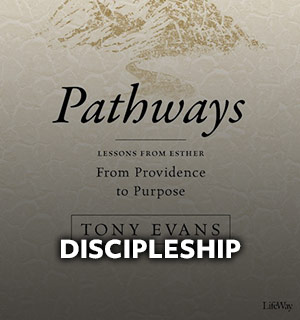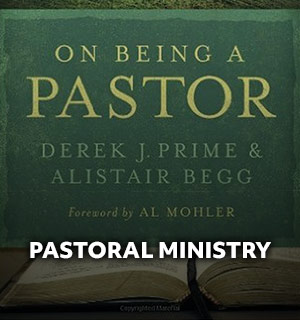
Research reveals what churches missed leading up to Hurricane Katrina and how they can prepare for future hurricanes and other disasters.
By Dr. Jamie D. Aten
“I looked up two days before Hurricane Katrina and I said, ‘All right team,’ talking to my church board, ‘what’s our hurricane plan?’ And they looked at me and said, ‘What hurricane plan?’” — a Biloxi, Mississippi pastor
Major disasters present unique challenges to pastors and churches, according to new research from the Humanitarian Disaster Institute (HDI) at Wheaton College.
The study of pastors and churches directly affected by Hurricane Katrina can help churches develop strategies for improving disaster ministry preparedness and response.
Though no two disasters are exactly alike, applying these findings from Hurricane Katrina can help pastors and churches who will face a future natural disaster lay a foundation for resilience.
Preparedness Levels
The majority of churches in the study were not prepared for disaster. Of the pastors surveyed:
- 59 percent reported their churches did not have a formal disaster preparedness plan in place prior to Hurricane Katrina.
- 24 percent had only “bare necessity” plans in place that consisted of attempting to protect physical property the day before Hurricane Katrina made landfall.
- 24 percent described having comprehensive preparedness plans in place focused on protecting church property (e.g., church records and data, sacraments) and church member communication (e.g., phone “tree,” evacuation recommendations).
Preparedness Challenges
The pastors also reported many challenges to preparedness. Among the findings:
- 55 percent discussed communication challenges and difficulties collecting information (e.g., emergency contact information, evacuation plans) from their congregation members as the storm approached.
- 53 percent noted they and their congregation members had underestimated the potential threat of Hurricane Katrina.
- 47 percent said they felt rushed and disorganized trying to help their churches prepare.
Types of Support Provided
HDI also surveyed church attendees about the type of support they received from their churches in the wake of Hurricane Katrina. Among the findings:
- 78 percent received spiritual and emotional support from their pastor.
- 73 percent had a pastor or another church member pray with them.
- 72 percent obtained social support from other church members.
- 47 percent partook in crisis counseling made available through their church.
- 43 percent were encouraged to evacuate by their pastor or church.
- 39 percent had physical health related needs met by their church (e.g., first aid, medical supplies).
- 33 percent had help rebuilding or repairing their home.
- 31 percent received financial donations/gifts from via their church.
Preparedness Strategies
Despite the fact that most pastors and churches were not well prepared and encountered numerous challenges in getting ready, they still played a significant role in helping their congregations and communities by implementing the following strategies.
1. Prepare and model preparedness. The pastors in this study reported significant individual resource losses (e.g., loss of shelter, food, and water). They were not immune from the powerful impact of Hurricane Katrina.
The pastors recommended other pastors should prayerfully seek wisdom and talk with their church leadership about if they should stay or leave. They suggest that other pastors take warnings to evacuate seriously and avoid putting themselves and others in dangerous situations.
If pastors are hurt or cause someone else to get hurt because evacuation warnings were ignored, they are less likely to be positioned to serve others. According to the pastors interviewed, staying in harm’s way is more likely to diminish ministry opportunities and effectiveness.
Evacuation doesn’t mean pastors have to travel to the other side of the country to be safe. Consider reaching out to local emergency management officials to identify a safe evacuation location that still positions church leadership to be able to return and respond as quickly as possible.
2. Facilitate church member preparedness activities while there is still time. One way this can be done is to encourage members to develop individual or family disaster plans and supplies.
Churches should provide disaster survival information: safety, first-aid, personal hygiene, important documents, emergency money funds, food and water, supplies, and evacuation routes and options. Lots of helpful information can be found at Ready.gov to help church members prepare.
3. Do what can be done to protect the church property. If you have time to minimize property damage to your church building, here are a few tips: board up windows, reinforce doors, secure heavy electronics (e.g., televisions and computers), anchor bookshelves and large cabinets, strap water heaters to walls, secure or remove items that could become projectiles in high winds, and consider raising water heaters and other appliances to avoid flood damage.
Though some disasters render such steps futile, taking steps to prepare the church building can make a big difference in offsetting damage if the building withstands structural damage.
4. Utilize existing communication approaches to share information and evacuation messaging ahead of the disaster. Use the same communication tools church leadership and membership use to communicate in non-emergency situations such as: e-mail lists, social media, church website postings, call lists, and prayer chains.
Another approach is to develop a call-center at another church outside the affected region (because long distance and cell phone use often come back before local calling options) that will volunteer to take messages and convey information to others.
Keep in mind not everyone is technologically savvy or may not have access to technology. In such cases, try to reach out to someone close to that person to check on them, or get in touch with them if it’s possible to do so without putting others in harm’s way.
Be sure to also make it clear ahead of the disaster how church leadership will communicate with church members after the disaster strikes and communication infrastructures are disrupted. For example, though not available at the time of the study, a recent technological advance is checking in as safe via Facebook.
5. Collect or update leadership and membership contact and emergency contact information. It is common practice for churches to have basic contact information for members and attendees (home address, email, cell phone number).
If not already obtained, gather emergency contact information, like where and how to contact them if they evacuate. Don’t just store this information on the desktop left behind in the church building; using an online platform like Google Docs, MailChimp, or Constant Contact surveys is a quick and secure way to gather this information.
Again, this only works prior to the disaster or after power and infrastructure start to bounce back, so pastors and churches need to act before the disaster strikes.
6. Get ready to pivot existing ministries to focus on disaster needs. Days before a disaster strikes is not the time to develop a whole new ministry out of thin air. Instead, consider adapting existing ministries and programs in order to meet disaster needs.
For example, a church might decide to expand a food pantry program to provide meals for disaster survivors. Start collecting resources you may need to carry out prioritized ministries in the wake of the disaster.
Realize that your church building may not be secure, so it would also be wise to reach out to other churches who might be able to supply resources that could be damaged by the storm that are essential to your disaster ministry.
7. Reach out to other pastors, churches, and relief groups now about coordinating responses. Join with other local churches to discuss how to prepare for and respond to a major disaster together. Build upon existing relationships and networks in which the church is already active.
Relationships should also be developed with local, regional, and national disaster and emergency agencies and groups (e.g., Send Relief, Red Cross, state emergency management agency, NVOAD state chapter).
These steps can help your church best prepare for the worst situations.

Jamie Aten
Jamie is the founder and executive director of the Humanitarian Disaster Institute and Blanchard Chair of Humanitarian & Disaster Leadership at Wheaton College (@WheatonHDI) and the author and editor of several books. He is a co-host of the award-winning The Better Samaritan blog and podcast and co-founder of Spiritual First Aid.
Methodology: In-depth interviews often lasting multiple hours each were conducted with 27 pastors from South Mississippi and New Orleans who led churches directly affected by Hurricane Katrina.
Church attendees at these pastors’ congregations also completed quantitative surveys to determine support provided in the wake of Hurricane Katrina.
For more on church preparation:










